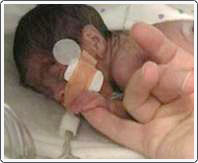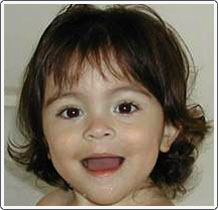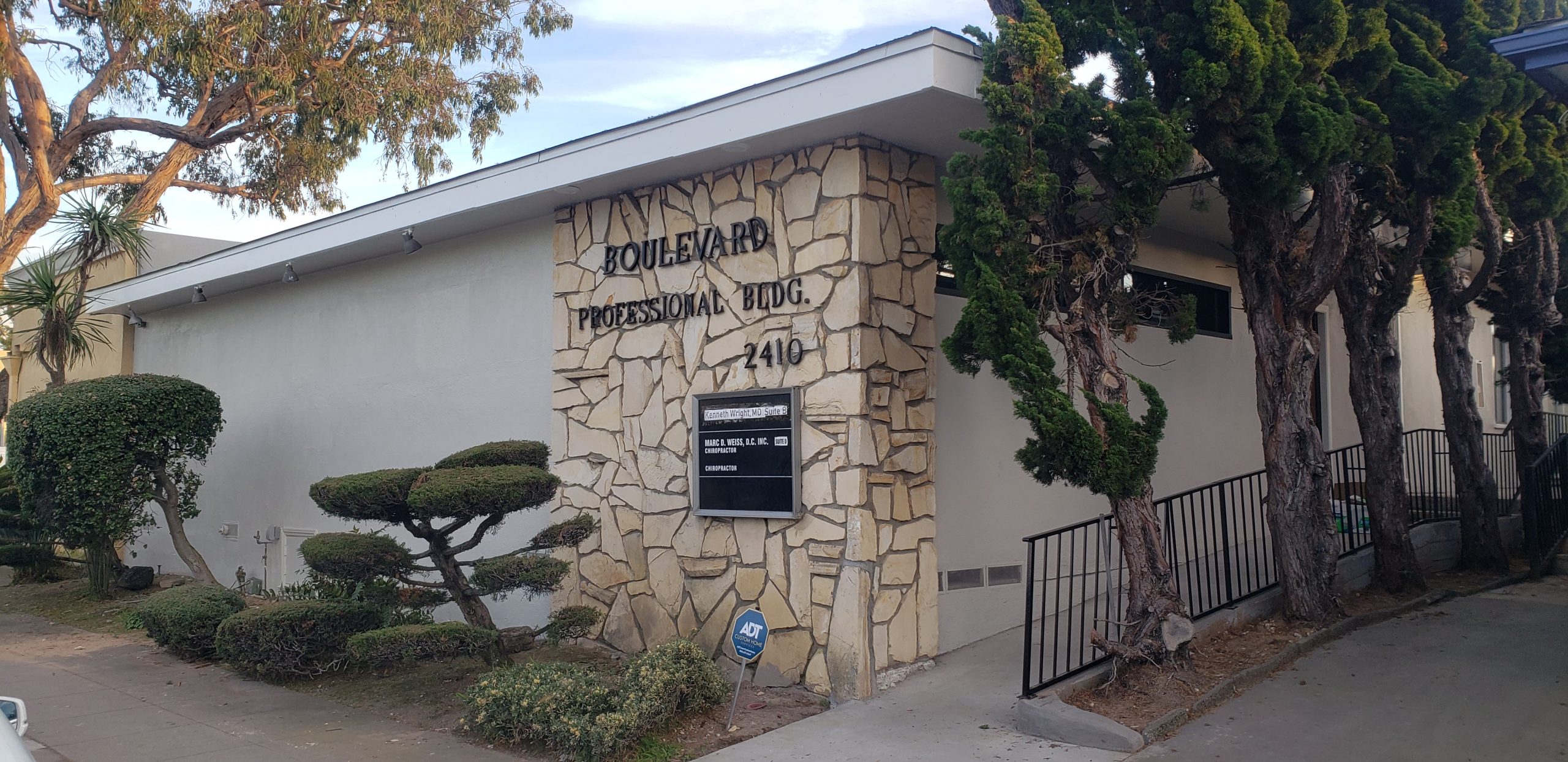
Very tiny premature baby at risk for retinopathy of prematurity. Patient was born weighing only 750 grams.

Updated pictures of premature baby shown above. She is now 2 years old, doing extremely well with excellent vision and straight eyes.
Retinopathy of prematurity (ROP) is a serious complication of prematurity that can cause vision loss and even blindness. Extremely low birth weight premature infants born <28 weeks gestational age are at greatest risk for any ROP, especially severe ROP. Of all infants weighing between 1000 and 1250 grams, almost half will show some sign of ROP; however, only 2% will develop severe vision-threatening ROP (threshold disease). Since children over 1250 grams almost never develop vision-threatening retinopathy of prematurity, ROP infant screenings should be done in all infants under 1500 grams birth weight. This rule, however, applies to those children receiving curtailed oxygen. ROP can still develop in those infants weighing more than 1500 grams. Almost all cases of retinopathy of prematurity are associated with hyperoxia (high oxygen levels). In utero, fetuses are normally in a state of relative hypoxia (very low oxygen levels). Premature birth exposes infants to higher oxygen levels than those present in the womb. When very early premature babies are delivered, the blood vessels in their retinas and other areas of the body are not fully developed. Sudden exposure to the world of oxygen aborts the normal growth of those blood vessels. After a while, retinal tissue that have no blood vessels send out molecular signals demanding blood vessel growth. Instead of normal growth, however, fragile blood vessels sprout inappropriately, starting a cascade of events that can lead to retinal detachment and blindness. The most common way to treat severe retinopathy of prematurity is using a laser to destroy the abnormal retinal tissue. But the results of that treatment are less than satisfactory, because almost half of the babies end up legally blind, although they do retain some vision. The most important aspects of managing ROP are prevention and early detection. Screening examinations are important to monitor the development of ROP. The initial NICU dilated ophthalmology exam should be performed at 4 to 6 weeks after birth for infants under 1500 grams, as this is when ROP first becomes evident. The frequency of follow-up eye examinations is determined by the ophthalmologist based on the retinal findings. For more information on research and projects involving retinopathy of prematurity, visit Wright Foundation and Research Activities.

